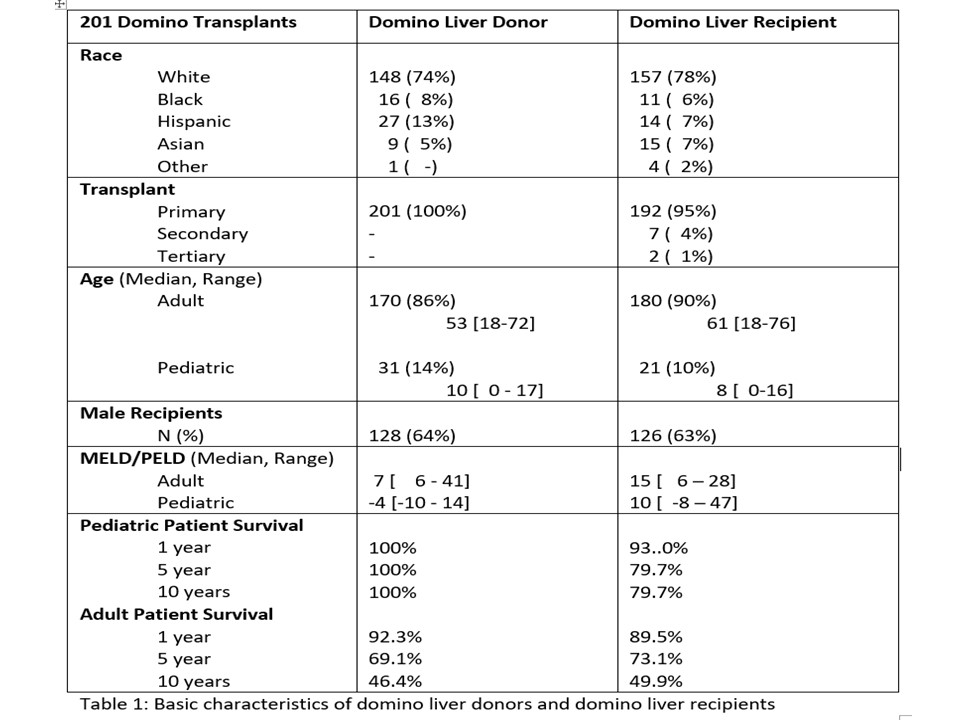Cumulative United States Experience with Domino Liver Transplants
SUNY Downstate Medical Center, Brooklyn, NY
Meeting: 2020 American Transplant Congress
Abstract number: B-163
Keywords: Liver transplantation, Living donor, Outcome
Session Information
Session Name: Poster Session B: Liver: Living Donors and Partial Grafts
Session Type: Poster Session
Date: Saturday, May 30, 2020
Session Time: 3:15pm-4:00pm
 Presentation Time: 3:30pm-4:00pm
Presentation Time: 3:30pm-4:00pm
Location: Virtual
*Purpose: The ongoing shortage of livers in the setting of growing waiting lists remains a challenge in transplantation. First introduced in 1996, domino liver transplantation offers an option for patients with metabolic diseases to undergo a deceased donor liver transplant and utilize their native liver for a different patient with liver failure. The reported experience in domino liver transplants is limited to case series. Long-term analysis from a national US cohort is yet to be described.
*Methods: Between 1996 to 2018, 201 domino liver transplants were reported to UNOS from 44 centers. Donor and recipient characteristics were analyzed. Overall actuarial survival and liver graft failure were estimated using Kaplan-Meier. The 20-year study period was divided into 4 eras (1999-03, 2004-08, 2009-13, 2014-18) and patient and graft survival were compared using log-rank tests.
*Results: Donor and recipient characteristics are summarized in Table 1. Most domino liver transplant recipients (94%) underwent a primary transplant. The most common underlying disease in adult donors was amyloidosis (85%); in pediatric donors, maple syrup urine disease (84%). while the domino liver recipients received only the liver transplant, the domino liver donors needed an addition heart in 31 cases, a additional kidney in 7 cases, and intestine with pancreas in 3 cases. The most common reason for transplant in adult recipients was cirrhosis (69.27%), followed by liver malignancy (21.23%), and metabolic disease (2.23%). Of the adult recipients, 90% received the liver from an adult domino liver donor; in children, 45% of liver grafts came from adult donors. Overall patient survival and liver graft failure rates were similar between domino liver recipients and donors.The longest domino liver is still functioning after 133 months in a child, and over 180 months in an adult recipient. Although there was a trend towards improved overall and graft survival in later years (2009-18), the differences were not statistically significant.
*Conclusions: Domino liver transplants are a safe strategy for increasing availability of livers with patient and graft survival and graft rates comparable to deceased donor liver transplants.
To cite this abstract in AMA style:
Gruessner A, Renz J, Saggi S, Gruessner R. Cumulative United States Experience with Domino Liver Transplants [abstract]. Am J Transplant. 2020; 20 (suppl 3). https://atcmeetingabstracts.com/abstract/cumulative-united-states-experience-with-domino-liver-transplants/. Accessed December 14, 2025.« Back to 2020 American Transplant Congress

